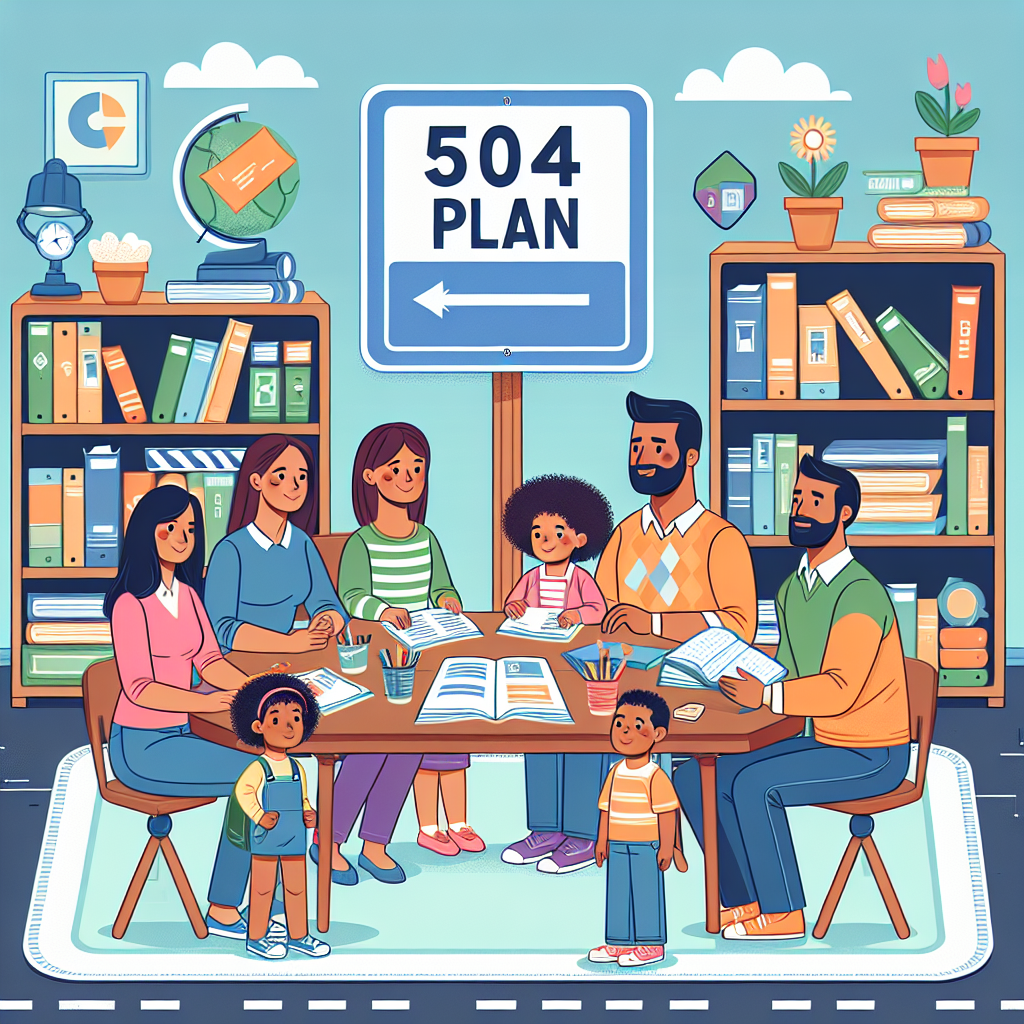
Introduction
Navigating the 504 Plan Process can often feel like steering a ship through rocky waters. As the educational landscape evolves, ensuring every child receives the support they need becomes paramount, especially for those with disabilities. Parents and educators alike face challenges as they strive to comprehend and implement the 504 Plan, a vital resource designed to provide accommodations and support in educational settings. This essential guide aims to simplify the 504 Plan process, offering step-by-step insights and practical tools that empower parents and educators alike.
Understanding the 504 Plan
What is a 504 Plan?
A 504 Plan is a formal education plan developed under Section 504 of the Rehabilitation Act of 1973. It provides accommodations and services to students with disabilities, ensuring they have equal access to education. Unlike Individualized Education Programs (IEPs), which are more tailored and extensive, 504 Plans focus on general modifications to the learning environment.
Who Qualifies for a 504 Plan?
The criteria for qualifying under a 504 Plan includes:
- A physical or mental impairment that substantially limits one or more major life activities.
- A record of such an impairment.
- Being regarded as having such an impairment.
Key Differences Between IEPs and 504 Plans
While both IEPs and 504 Plans aim to provide support, they differ significantly in scope and execution:
| Feature | IEP | 504 Plan |
|---|---|---|
| Legal Basis | Individuals with Disabilities Education Act (IDEA) | Section 504 of the Rehabilitation Act |
| Focus | Special education services | General education accommodations |
| Eligibility | Specific disabilities meeting criteria | Any disability that limits major life activities |
| Plan Development | Requires parental consent and meetings | Can often be created with less formalities |
Step 1: Recognizing the Need for a 504 Plan
Signs Your Child May Need a 504 Plan
As a parent or educator, recognizing early red flags can make a significant difference:
- Academic struggles that do not align with the child’s capabilities.
- Behavioral issues that disrupt learning.
- Frequent absences related to health concerns or psychological issues.
Case Study: Alex, the Reluctant Learner
Alex, a fourth-grader with anxiety, struggled to focus in class. Despite having average cognitive abilities, his anxiety caused significant interruptions in his learning. After discussing his difficulties with teachers, his parents petitioned for a 504 Plan. The resulting accommodations—like reduced homework and a quiet space—allowed Alex to thrive.
Validating Concerns with Data
Collecting data early can substantiate your concerns. Use observation logs, report cards, and assessments to build a comprehensive picture of the child’s needs.
Step 2: Initiating the 504 Plan Process
How to Request a 504 Plan
Parents can initiate the process by writing a formal request to the school’s 504 coordinator or the administration. This should include:
- Specific concerns regarding the student’s challenges.
- Evidence supporting the need for accommodations.
The Role of the 504 Team
Once the request is made, a team comprised of educators, school psychologists, and parents convenes to assess eligibility. Understanding this team’s dynamics can help parents advocate effectively.
Step 3: The Evaluation Process
What to Expect During Evaluation
The evaluation process typically involves:
- Reviewing Existing Data: This may include academic records and behavioral observations.
- Collecting New Data: Educators may conduct assessments to measure academic performance and behavioral health.
Analyzing Results
Post-evaluation, the 504 Team convenes to discuss the findings, determining if the student qualifies for the plan. Parents have the right to participate in these discussions and should be prepared with questions.
Case Study: Maria, the Artistic Genius
Maria, a sixth-grader with ADHD, underwent a series of assessments which revealed her exceptional arts performance amidst academic struggles. The 504 Team recognized her needs and provided accommodations like extended time for assignments. This decision proved invaluable, allowing Maria to flourish both academically and artistically.
Step 4: Developing the 504 Plan
Crafting the Plan
Once eligibility is established, the 504 Team designs a plan outlining specific accommodations. Key considerations include:
- Classroom Accommodations: Adjustments such as seating arrangement, use of technology, or alternative testing environments.
- Behavioral Strategies: Implementing social skills training or counseling as needed.
Importance of Parental Involvement
Parents must remain actively involved in the drafting of the 504 Plan. Their insights about the child’s daily life, preferences, and challenges are crucial for an effective plan.
Step 5: Implementing the 504 Plan
Communicating the Plan
Once the 504 Plan is established, effective communication is vital. Ensure that all educators involved with the child are informed of the accommodations and understand their roles.
Monitoring Progress
Ongoing assessment is crucial to determine if the accommodations are effective. Regular check-ins between parents and educators can help fine-tune the process.
Case Study: Jake, the Math Whiz
Jake had a knack for math but faced difficulties in a traditional learning environment. His 504 Plan included the use of a calculator and extra time on tests. Regular meetings between Jake’s parents and his math teacher ensured that the accommodations were effective. Within months, Jake’s performance improved, solidifying his love for math.
Step 6: Reevaluation and Updating the Plan
Importance of Reevaluation
A 504 Plan is not static; it requires periodic reevaluation. Typically, schools review the plan every year, but adjustments can be made any time based on changing needs.
Signs That a Reevaluation is Necessary
- Significant improvement or decline in academic performance.
- Changes in the child’s health status.
- Transitioning to a new grade level or school can necessitate a reevaluation.
Conclusion
Navigating the 504 Plan Process can seem daunting, but by understanding each step, parents and educators can work together to create an effective support system for students with disabilities. Remember, the goal is to ensure every child has an equitable opportunity to thrive in the educational environment.
As you embark on this journey, keep in mind: advocacy, collaboration, and open communication are your strongest allies. Empower your child, partner with educators, and advocate tirelessly. The fruits of your labor will pave the way for a brighter, more inclusive future.
FAQs
1. How long does the 504 Plan process take?
The process can vary; however, once a request is made, schools typically have 60 days to evaluate and develop a plan.
2. Can a 504 Plan be created without parental consent?
No. Parental involvement is not only encouraged but legally required to develop a 504 Plan.
3. What accommodations can be included in a 504 Plan?
Accommodations can range from physical modifications, such as wheelchair access, to academic aids like extra time on tests or modified assignments.
4. If my child is already on an IEP, do they need a 504 Plan?
Generally, no. Students on IEPs receive services under both IDEA and Section 504 automatically.
5. Can 504 Plans be modified after they are implemented?
Yes! The 504 Plan should be a living document that evolves as a student’s needs change. Regular reviews ensure the plan remains effective.
By following this comprehensive guide, parents and educators can work collaboratively to navigate the 504 Plan process, fostering an educational environment where every child has the opportunity to succeed.


















